I put together this fairly basic mix prep guide so you can get your files from recording prepared in a way that will make the mixing process as smooth and organised as possible, and end up with your music sounding as best as it can.
I mainly record heavier music that most often includes drums, at least one guitar doubled, bass, and vocals, sometimes some samples or special effects. It is only a starting point and shouldn’t be taken as the be-all-end-all of mix preparation.
Recording your music
Ideally you want to start thinking about some of these mix prep things before you start recording. It’s much better to get everything right as early as possible at the source than to try and fix it during editing or mixing.
This is by no means a complete guide to recording music and there are entire books and courses on these topics that I would encourage you to seek out. It is more of a quick and dirty checklist of the most basic things to consider when recording.
If you’re recording yourself or your band, these are some quick notes that should help you capture a quality recording that will help to get the best results from the mixing process.
If you’re recording at a professional studio, most of these items will be taken care of, or your producer or engineer will know how to do these things.
You can also check out acedrumaudio.com/studio for more info on preparing for the studio.
Be sure to record at the very least:
- 1 kick inside mic and drum shell top mics
- 1 set of left and right drum overheads and 1 room mic, more if possible or desired
- Clean DI guitar and bass tracks in addition to any amp tracks recorded with microphones
- 2 of the same, but separately recorded guitar rhythm tracks for doubling
Also check the following:
- DAW is set to record in 24 bit 48khz or higher
- Input gain for all tracks is set to between -12db and -6db
- No tracks are clipping or showing red in meters
- Use a pop filter for vocals
- All song arrangements are finalised and major edits have been done
Export all tracks in your recording session
When exporting audio files for mixing, please check the following:
- All tracks are clearly named (see example at the bottom of this page)
- All tracks are exported starting at 0:00:00 (this will help to line them all up when mixing)
- All tracks are mono unless stereo is required for a specific instrument or effect
- Faders and panning are set to 0 or bypassed
- All plugins are bypassed
- Tempo maps are exported as midi (or singular tempos are noted in a text file, see below)
Include a list of all audio files with notes
You will almost always have additional notes to go along with your files for mixing. You can include a text file with these notes with your files.
- Create a plain text file on your computer
- Select all files in your file browser on your computer and copy
- Paste into the text file (you should now have a text list of all the files in your text document)
- Include song titles and any other notes that are relevant to the session
- Save this text file in the same folder as your audio tracks
Organise files and folders, upload and share
- Organise all track files and notes into a folder named ‘Album Name’ (a working title is fine)
- If the recording was done in one session, put all files in the ‘Album Name’ folder
- If the recording was done in separate sessions, export files into separate folders named with each song title inside the ‘Album Name’ folder
- Put the ‘Album Name’ folder into a folder named ‘Band Name’
- Upload the ‘Band Name’ folder to Dropbox or Google drive (zip the entire Band Name folder first to make uploading faster)
- Copy the share link and email it to [email protected] with the subject: Band Name – Album Name mix files
Example Files
Below is an example of how exported track files should be named and organised. Every recording session will be different and the amount of tracks will vary from session to session.
This list is only a general example to give you a starting point and includes common tracks that would typically be recorded for rock, metal, or other heavy music genres.
All files should be exported in mono with volume, panning, and plugins bypassed unless otherwise noted.
01 Kick In.wav
02 Kick Out.wav
03 Snare Top.wav
04 Snare Bottom.wav
05 Tom 1.wav
06 Tom 2.wav
07 OH L.wav
08 OH R.wav
09 Hi-hat.wav
10 Room.wav
11 Guitar 1 L DI.wav
12 Guitar 1 L.wav
13 Guitar 1 R DI.wav
14 Guitar 1 R.wav
15 Guitar 2 L DI.wav
16 Guitar 2 L.wav
17 Guitar 2 R DI.wav
18 Guitar 2 R.wav
19 Bass DI.wav
20 Bass.wav
(You can include mics used on guitar and bass track file names if needed)
21 Vocal 1.wav
22 Vocal 2.wav
23 Effects.wav (stereo) – could also be for Samples, Synths, Keyboards etc
Tempo.mid (MIDI file for tempo map)
